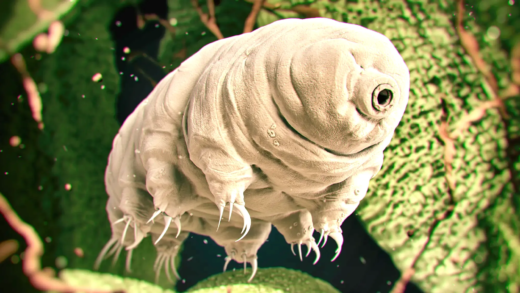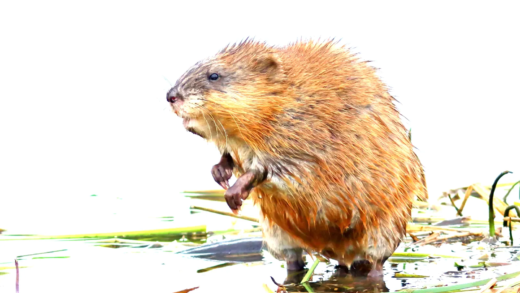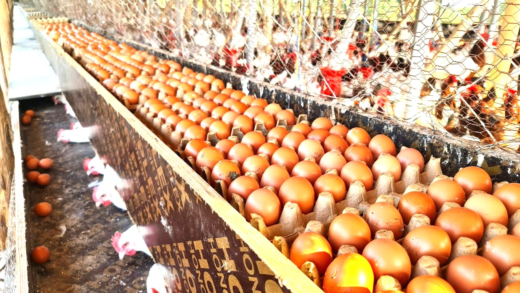Peacock feathers are primarily made of keratin and display vibrant colors due to light reflection. Molting is a natural process where peacocks shed old feathers for new ones, which can take weeks to months depending on health and environmental factors. While many birds regrow feathers, the speed varies by species. Losing tail feathers affects peacock behavior, reducing confidence and altering social dynamics. Their appearance changes significantly without full tails, impacting their mating opportunities and social interactions.
What are Peacock Tail Feathers Made Of?
Peacock feathers are not just beautiful; they are fascinating too. These stunning feathers are primarily made of a protein called keratin, which is the same material found in human hair and nails. The vibrant colors of peacock tail feathers come from microscopic structures that reflect light in specific ways. This phenomenon is known as structural coloration. Instead of relying solely on pigments, peacocks have feather barbs that create iridescence through light diffraction. The intricate arrangement of these barbs produces the brilliant blues, greens, and golds we admire.
Understanding the composition of peacock feathers helps explain their captivating appearance. The combination of keratin and light manipulation results in feathers that can change color depending on the angle of light. This feature not only enhances their beauty but also plays a crucial role in mating displays, where brighter and more vivid colors attract potential mates.
How Do Peacocks Lose Their Tail Feathers?
Peacocks lose their tail feathers through a natural process known as molting. This typically occurs once a year and involves shedding old feathers to make way for new ones. During molting, a peacock’s tail feathers gradually fall out, usually starting from the outermost feathers and moving inward. The entire process can take several weeks, and it is not uncommon for peacocks to look a bit scruffy during this time.
The shedding of these feathers is essential for maintaining the health and vibrancy of the tail. Old feathers can become worn and dull, making it necessary for the peacock to replace them. This is similar to how we might change our wardrobe to keep it fresh and stylish. Peacocks often lose feathers while preening or during interactions with other birds, which can hasten the process.
Do Peacock Feathers Grow Back After Molting?
Yes, peacock feathers do grow back after molting. This regrowth is a natural part of their life cycle. After the old feathers are shed, new feathers begin to emerge from the same follicles. The time it takes for peacock feathers to regrow can vary, typically ranging from a few weeks to several months. Factors such as the peacock’s health, age, and environmental conditions can influence this timeline.
During the regrowth period, the new feathers may initially appear dull before they fully develop their vibrant colors. This stage is crucial, as it indicates that the peacock is preparing for the next mating season. The ability of peacocks to regrow their feathers is vital for their survival and reproductive success, as a full, colorful tail is a significant factor in attracting mates.
How Long Does It Take for Peacock Feathers to Regrow?
Peacock feathers regrow after molting, but how long does this process take? Typically, it can take anywhere from a few weeks to several months for peacocks to regain their stunning tail feathers. The exact timeline depends on several factors:
- Health: A healthy peacock will generally regrow feathers faster than one that is stressed or malnourished.
- Age: Younger peacocks often have quicker regrowth compared to older ones.
- Season: Environmental conditions, such as temperature and sunlight, can affect feather regrowth speed.
During the regrowth phase, new feathers may appear dull and lack the vibrant colors that we associate with peacocks. This is a natural part of the process. As the feathers mature, they gradually become more colorful and resplendent. A peacock’s full, colorful tail is crucial for attracting mates, making this regrowth period vital for their reproductive success.
What Triggers the Molting Process in Peacocks?
The molting process in peacocks is triggered by a combination of internal and external factors. One of the main drivers is hormonal changes that occur due to seasonal shifts, primarily influenced by daylight hours. As the days grow longer in spring, these hormonal changes signal to the peacock that it’s time to shed old feathers and grow new ones.
- Seasonal Changes: Longer daylight hours in spring initiate molting.
- Health and Nutrition: A well-nourished peacock is more likely to molt successfully.
- Stress: Environmental stressors can also impact the timing and efficiency of molting.
Molting is essential for maintaining feather quality, as old feathers can become damaged and less effective for display or insulation. This cycle ensures that peacocks always have the best tools for attracting mates and surviving in their habitats.
Different Types of Peacock Feathers
Not all peacock feathers are created equal! There are several types of feathers that serve various functions:
- Tail Feathers: The most famous, these are long, colorful feathers used during courtship displays.
- Contour Feathers: Shorter feathers that cover the body and provide shape.
- Down Feathers: Soft, fluffy feathers that provide insulation.
Each feather type has its own role, contributing to the peacock’s overall appearance and functionality. For instance, tail feathers are crucial during mating rituals, showcasing the peacock’s health and genetic fitness. Understanding the diversity of peacock feathers adds depth to our appreciation of these magnificent birds.
Do All Birds Regrow Their Feathers After Losing Them?
Feather regrowth is a common trait among many bird species, including peacocks. However, not all birds follow the same pattern when it comes to regrowing feathers. Most birds, like peacocks, undergo molting, which is a natural process where they shed old feathers and grow new ones. This process ensures that they maintain optimal feather quality for insulation and display.
Some birds are known for their rapid feather regrowth, while others may take longer. For instance:
- Songbirds: Typically molt once a year, regrowing their feathers quickly in a few weeks.
- Waterfowl: Often experience a simultaneous molt, losing all flight feathers at once, which can take several months to recover.
- Raptors: Like hawks and eagles, may take longer to regrow feathers due to their larger size and slower metabolism.
Factors affecting feather regrowth across bird species include diet, health, and environmental conditions. While many birds can regrow feathers after losing them, the speed and efficiency of this process can vary significantly. Understanding these differences helps highlight the adaptability of birds in maintaining their plumage for survival and mating.
How Losing Tail Feathers Affects Peacock Behavior
Losing tail feathers can significantly impact a peacock’s behavior. When a peacock sheds its feathers, it often appears less impressive to potential mates, which can lead to changes in courtship behavior. Peacocks rely heavily on their magnificent tails during mating displays, showcasing their health and genetic fitness. Without their full plumage, they may become less confident and less likely to engage in elaborate courtship rituals.
Moreover, the loss of tail feathers can affect their social interactions with other peacocks. A peacock without a full tail may face challenges in establishing dominance and territory. This could lead to increased stress or changes in social hierarchies among peafowl.
In some cases, the behavioral changes post-feather loss can include:
- Reduced Display Behavior: Peacocks may limit their displays to conserve energy.
- Increased Aggression: Compensating for perceived weakness, they may become more aggressive towards rivals.
- Withdrawal: Some may avoid social interactions, preferring to stay hidden.
Ultimately, the loss of tail feathers affects not just the physical appearance of peacocks but also their social dynamics and mating opportunities.
Peacock Appearance After Losing Feathers
Without their glorious tails, peacocks can appear quite different. The iconic long, colorful feathers that usually fan out dramatically are essential for their striking appearance. When a peacock loses these feathers, it may look smaller and less vibrant, which can impact its ability to attract mates.
During the molting phase, a peacock’s appearance may include:
- Shorter Tails: The absence of long feathers makes their tails look stubby.
- Dull Colors: New feathers often emerge dull and less colorful until fully matured.
- Overall Scruffiness: The transition can leave them looking unkempt, which may influence their confidence and behavior.
This change in appearance can lead to behavioral adaptations as well, as previously mentioned. A peacock might try to hide or avoid confrontation, relying on its remaining features to navigate social situations.





Comments are closed.